CNA—This weekend, the longest Catholic pilgrimages ever organized in the United States — possibly the world — will commence on the edges of the country.
The National Eucharistic Pilgrimages, organized as part of the multiyear National Eucharistic Revival, will see a group of young men and women collectively walk over 6,500 miles, carrying the Eucharist across four different routes and meeting in Indianapolis for the National Eucharistic Congress July 17–21. It’s not known yet just how many people will end up participating in the four pilgrimages, but organizers are hoping to attract tens of thousands.
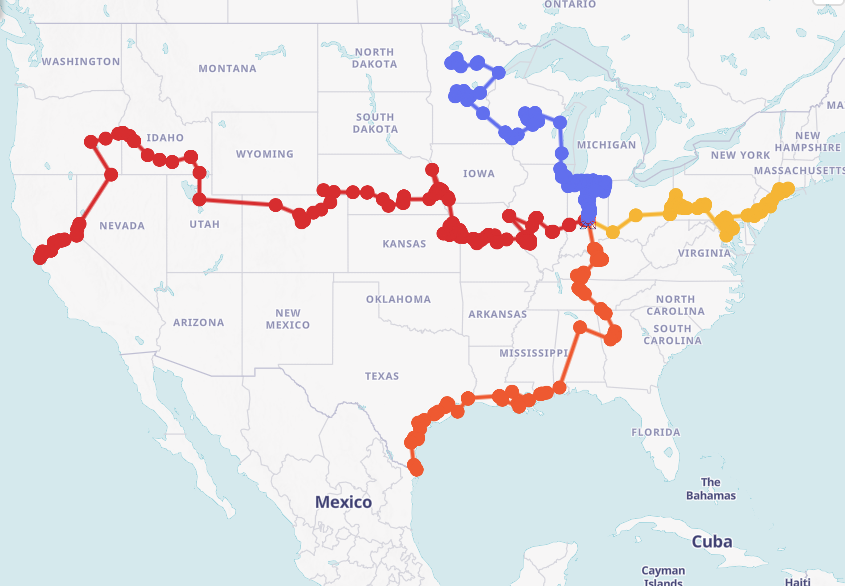
Arguably, in the past decade or so, Catholic pilgrimages in the United States have — if you’ll pardon the pun — hit their stride. The organizers of a number of prominent Catholic pilgrimages told CNA that they’ve seen interest among Catholics grow and promoted the idea of pilgrimage as a powerful means of spiritual revival.
‘So overwhelming and so beautiful’
A pilgrimage is broadly defined as a journey to a holy place and is traditionally associated with walking. The concept of pilgrimage in the Catholic tradition is far from new, of course — the most famous pilgrimage in the world is arguably the 1,000-year-old Camino de Santiago through Spain, Portugal, and part of southern France. Last year, nearly half a million people from around the world did the Camino, a new record. Thirty-two thousand of those people were from the U.S., the largest foreign group represented.
Though the many world-famous European pilgrimages with centuries of pedigree are indeed attractive, Americans aren’t only flooding those trails. Many are blazing their own here at home and have seen their efforts rewarded with growing numbers of participants.
In just over a decade and a half, the “Kansas Camino,” also known as the Father Emil Kapaun Pilgrimage, has grown from just five participants the first year to more than 100 a few years later. Scott Carter, coordinator of the Father Kapaun Guild in Wichita, told CNA that this year over 400 people from at least 26 states signed up to walk the 60-mile route over Kansas backroads beginning May 30.
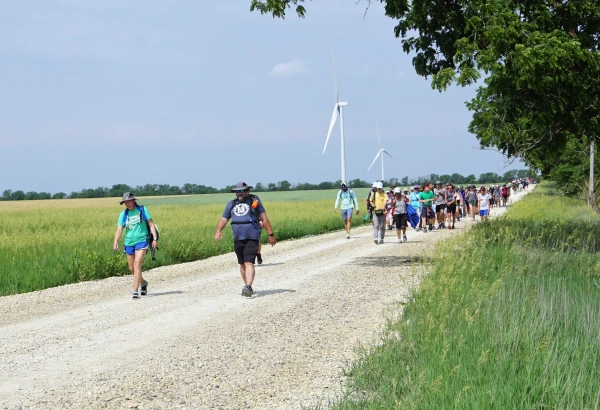
Kapaun was a Catholic priest and military chaplain who ministered to his fellow soldiers during the Korean War. Likely buoyed by recent developments in Kapaun’s sainthood cause as well as the providential rediscovery of his body and return to Kansas in 2021, the Kapaun Pilgrimage has exploded in popularity.
Carter said the founder of the pilgrimage, Father Eric Walden, was in the military too and wanted a way to enter more deeply into the life of Father Kapaun. The route of the pilgrimage takes participants from Wichita to Kapaun’s home parish in rural Pilsen, Kansas.
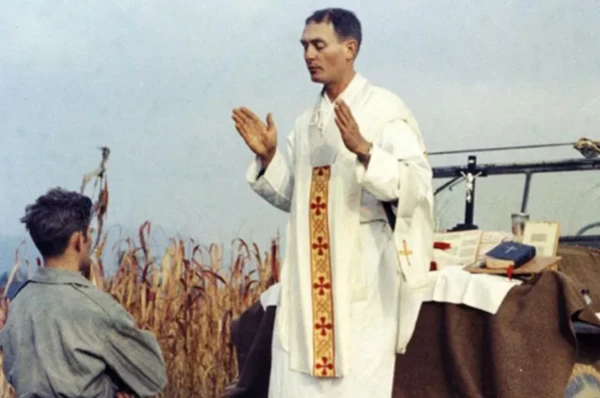
Carter described the concept of pilgrimage as “sacramental in its nature, putting both our body and soul to work in response to God’s call.”
“On pilgrimage we contribute physically, mentally, spiritually to our prayers, and it often gives us comfort that we’re doing everything we can to leave our petition in God’s hands,” he said.
On the Kapaun Pilgrimage, as on any pilgrimage, people walk for different reasons — some for a specific purpose or prayer intention, some seeking spiritual rejuvenation, others for the purpose of venerating the holy site at the end.
“I feel like everybody has their own story. Everybody has something that strikes them. But I do think there’s a unique way where the physical nature of the pilgrimage, the removal from our ordinary lives; it just invites us into something different and to experience something in a unique way,” he said.
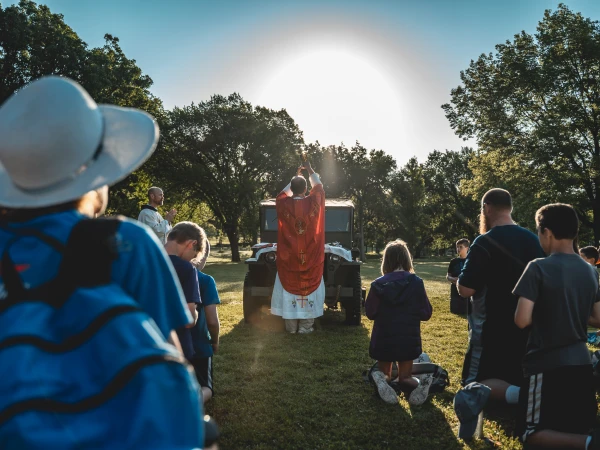
Carter said the joy that awaits pilgrims at the end of their journey is reminiscent of the joy we hope for as Catholics at the end of our life journey.
“When you reach your destination, it was just so overwhelming and so beautiful, people cheering us on and everything. And so it’s a little hint, hopefully, of what heaven is like … the welcome that we’re going to receive when we’re finally walking through the pearly gates,” Carter said.
‘American Catholics are reengaging’
Gabe Jones, a father and a financial adviser with the Knights of Columbus, founded the Joseph Challenge Pilgrimage in 2015 in St. Louis. The roughly 24-mile annual walk aimed at Catholic men has grown from just a handful of friends in its first year to “just under 60 guys” in one of the post-pandemic iterations. Jones said they’ve had 30 or so participants on average in each of the nine years, with minimal promotion of the event apart from word of mouth.
Even if their ranks aren’t quite as large as, say, the Kapaun Pilgrimage, Jones said he has seen the Lord working during the pilgrimage even if the number of walkers is small. One early year, he said, several fellow participants dropped out, leaving the number of pilgrims at just two. Jones walked with that one other man, who was at that point discerning his vocation. That man is today a monk at Silver Stream Priory in Ireland, Jones said.
“You can never judge the fruit of [a pilgrimage] by the numbers,” he commented.
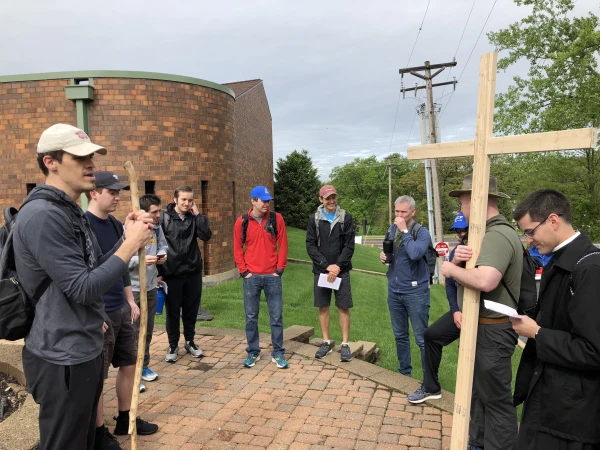




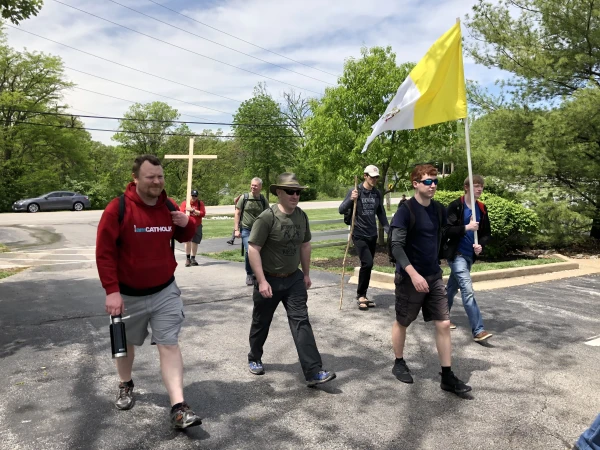
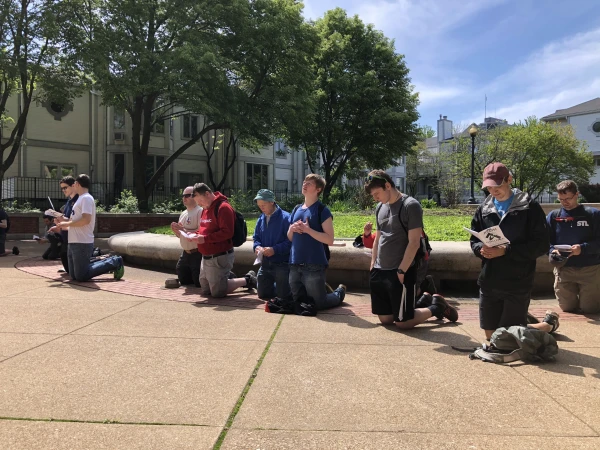

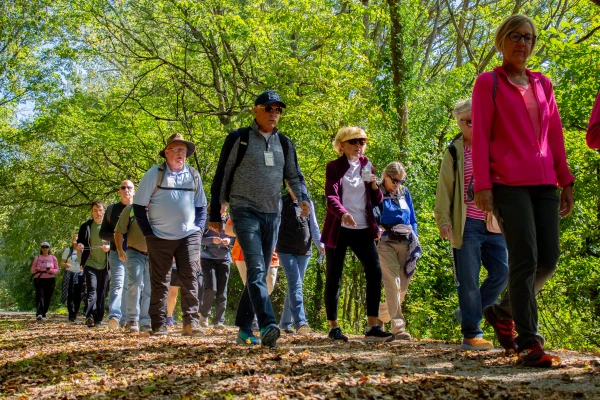
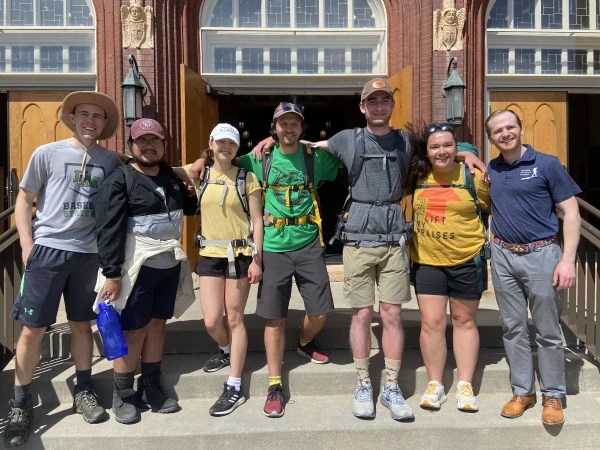
You must be logged in to post a comment.